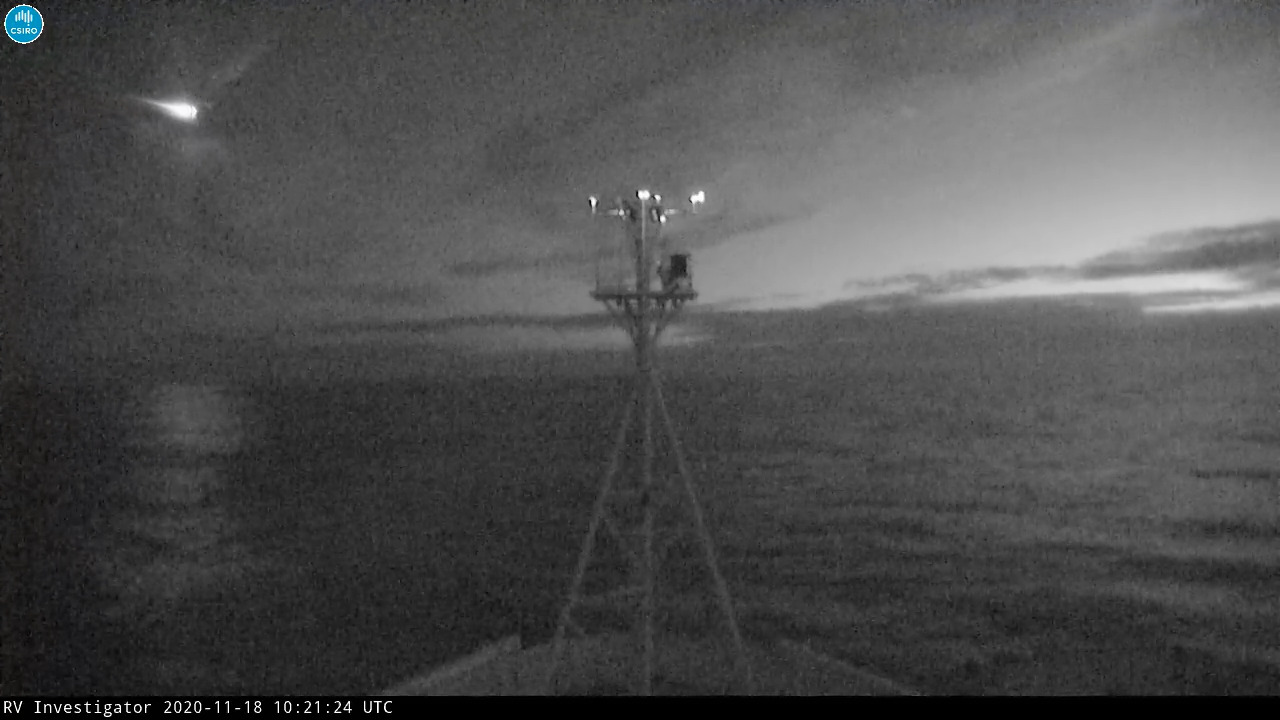Watch a bright fireball explode over the Tasman Sea (video)
The meteor was green, but the footage capturing it was black and white.
A bright green meteor streaked across the southern coast of Tasmania, Australia, and researchers caught the fireball on camera as it broke up over the ocean.
The meteor lit up the night sky on Wednesday (Nov. 18) at 9:21 p.m. local Tasmanian time (5:21 a.m. EST and 1021 GMT). A livestream camera on the research vessel Investigator, which is operated by Australia’s national science agency, CSIRO, captured incredible views of the fireball as it descended from space and disintegrated above the Tasman Sea.
"What we saw on reviewing the livestream footage astounded us; the size and brightness of the meteor was incredible," John Hooper, CSIRO voyage manager on board Investigator, said in a statement. "The meteor crosses the sky directly in front of the ship and then breaks up — it was amazing to watch the footage, and we were very fortunate that we captured it all on the ship livestream.”
Related: Perseid meteor shower 2020 brings celestial fireworks to the night sky (photos)

The livestream camera on board Investigator operates 24 hours a day, seven days a week. The meteor was captured when the ship was approximately 62 miles (100 kilometers) south of the Tasmanian coast, where it is stationed to map the seafloor of the Huon Marine Park, conduct oceanographic studies and run sea trials for a variety of marine equipment, according to CSIRO (which stands for "Commonwealth Scientific and Industrial Research Organisation").
Meteors are chunks of space rock that enter Earth’s atmosphere, and they often go unnoticed in unpopulated areas such as the Southern Ocean.
"Many meteors were once asteroids, travelling through space on their own trajectory. This changes as they pass close to Earth, where they can be affected by its gravitational pull," Glen Nagle, a researcher from CSIRO Astronomy and Space Science, said in the statement. "As they enter our atmosphere, they become meteors — and their entry can be visually spectacular."
Sign up for the Live Science daily newsletter now
Get the world’s most fascinating discoveries delivered straight to your inbox.
Footage of the meteor streaking across the night sky was captured in black and white, but observers said the bright flash of light appeared green to the naked eye. While there have been reports of additional sightings in the area, no other photos or videos have been shared of the meteor.
"Cameras are everywhere, in our pockets and around our cities, but they have to be pointed in the right place at the right time — RV Investigator was in that place and time," Nagle said in the statement.
Follow Samantha Mathewson @Sam_Ashley13. Follow us on Twitter @Spacedotcom and on Facebook.











